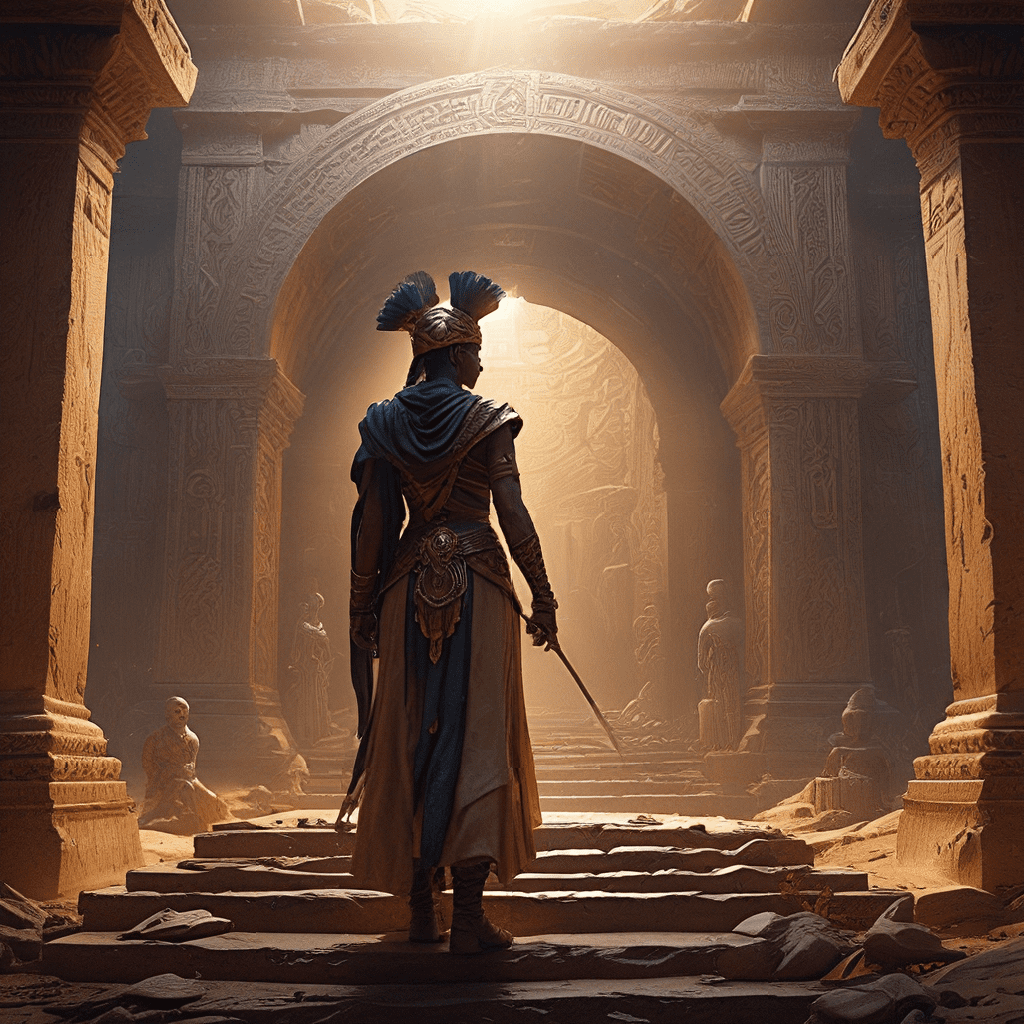1. Introduction: The Significance of Tombs in Ancient Egyptian Belief
In ancient Egypt, the afterlife held paramount importance. Egyptians believed that after death, the soul embarked on a perilous journey to the underworld, where it would be judged and either granted eternal life or condemned to an eternity of suffering. The tomb served as a vital gateway to this afterlife, a sacred space where the deceased’s spirit would reside and from which it would journey into the afterlife. The tomb was not simply a place of burial; it was a complex structure designed to protect the deceased and their belongings, ensuring their safe passage into the afterlife.
The construction and decoration of tombs were meticulously planned, reflecting the Egyptians’ deep belief in the importance of preparing the deceased for their journey to the underworld. The tomb was intended to be a microcosm of the world, filled with symbols, images, and texts that would guide the deceased through the afterlife.
2. The Role of the Tomb Spirits: protectors of the deceased
Ancient Egyptians believed in a complex system of spirits and deities that played a crucial role in the afterlife. One of the most important concepts was the “ka,” which represented the vital essence of a person. The ka was thought to reside in the tomb after death, where it would remain connected to the deceased’s physical body. It was believed that the ka needed to be nurtured and protected to ensure the deceased’s well-being in the afterlife.
Another important aspect of the afterlife was the “ba,” which was the deceased’s personality and spirit. The ba was thought to be able to leave the tomb and travel back to the world of the living, visiting loved ones or seeking nourishment. It was believed that the ba required guidance and protection to navigate the perilous journey to the afterlife.
The “akh” represented the deceased’s transformed spirit, which had successfully navigated the underworld and achieved immortality. The akh was capable of dwelling in the afterlife with the gods and possessing god-like powers. The tomb was believed to hold the key to the akh’s creation and its ability to reach eternal bliss.
3. Powerful Guardians: Deities and Spirits of the Tomb
Ancient Egyptian mythology is rich with powerful deities and spirits associated with the tomb, each playing a specific role in protecting the deceased and ensuring their safe passage to the underworld. Anubis, with his jackal head, was the god of mummification, the afterlife, and the protector of tombs. He was responsible for guiding the deceased through the afterlife and weighing their hearts against the feather of truth.
Osiris, the god of the underworld and the afterlife, held a critical role in the judgment process. It was believed that Osiris would weigh the deceased’s heart against a feather, determining whether they were worthy of eternal life or condemned to suffer in the underworld.
Horus, the falcon-headed god, was known for his strength and courage. He protected the deceased from evil spirits, ensuring their safe passage to the underworld and their continued well-being in the afterlife.
Other deities associated with the tomb included Hathor, the goddess of love and music, who was believed to welcome the deceased into the afterlife; Thoth, the god of wisdom and magic, who assisted in the process of judgment; and Nephthys, the goddess of funerary rites, who helped guide and protect the deceased.
4. The Threat of Malevolent Spirits: Protectors against evil
The journey to the underworld was fraught with dangers, filled with malevolent spirits and demons who sought to harm the deceased. One of the most formidable threats was Apep, the embodiment of chaos and darkness. Apep was believed to be a giant serpent that threatened to engulf the world in darkness, disrupting the order of the afterlife.
Tomb guardians, both divine and earthly, played a critical role in warding off these negative forces. They stood watch over the tomb, protecting the deceased and ensuring their safe passage into the afterlife. Magical spells and amulets were also used to ward off evil spirits, creating a protective barrier around the tomb, safeguarding the deceased and their belongings.
5. The Tomb as a Sacred Space: Rituals and Offerings
Funerary rites were central to ancient Egyptian beliefs, essential in ensuring the well-being of the deceased in the afterlife. These rituals included mummification, the preparation of the tomb, and the performance of specific ceremonies. The purpose of these rites was to appease the tomb spirits and secure their favor, ensuring the deceased’s safe passage into the afterlife.
Offerings were an important part of the funerary rites, providing sustenance for the deceased and placating the tomb spirits. These offerings included food, drink, clothing, and precious objects. The offerings were placed in the tomb, intended to provide the deceased with everything they would need in the afterlife.
Amulets and magic played a crucial role in protecting the deceased and the tomb. These talismans were believed to possess protective powers, warding off evil spirits and ensuring the deceased’s safe passage to the underworld. The tomb itself was often decorated with protective spells and symbols, intended to keep the deceased safe and secure.




